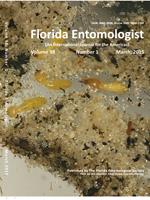We provide the first survey of collembolan fauna of the archipelago Fernando de Noronha (Brazil) with 36 new records of species for the archipelago and a genus Calvatomina Yosii, 1966) and a subgenus (Setogaster Salmon, 1951) new for Brazil. Moreover the following is proposed replacement name: Collophora terrabrasilis nom. nov. for Collophora brasilis Zeppelini & Brito (2013).
Collembola (Hexapoda: Entognatha) is one of the most abundant and widely distributed taxa among terrestrial Hexapoda (Hopkin 1997). Collembola specimens are found in almost all habitats, excluding aquatic environments below the surface firm where their occurrence is rare or accidental. The greatest diversity and abundance of these species occurs in soil and in adjacent microhabitats, especially where there is much organic matter (Zeppelini et al. 2008). The potential value of Collembola as biological indicators of soil health and ecosystem quality is increasingly recognized and therefore knowledge of the diversity of Collembola becomes useful in the development of conservation strategies and environmental monitoring (Stork & Eggleton 1992; Zeppelini et al. 2008).
The growing human impact on biodiversity requires large efforts in developing conservation strategies (Myers et al. 2000). In island environments these efforts should be a priority, as these environments have major barriers to dispersal and colonization, especially for terrestrial fauna, which usually shows very particular diversity in islands. Analyses of the distribution of terrestrial species may be useful as a means to evaluate environmental quality (Rusek 1998; Kumssa et al. 2004).
In this work we present the first survey of Collembola fauna in the soil of the Brazilian archipelago Fernando de Noronha, which expands knowledge of the distribution of these animals. The collections were made in Jul and Aug 2012 on the 2 largest islands of the archipelago, Fernando de Noronha island and Rata island. The archipelago (S 3°50′ W 32°24′) is approximately 345 km away from the nearest point of the Brazilian coast. Collecting was done by soil sample on 7 different beaches on Fernando de Noronha. At each site we collected on the sand beach, on the cliff slope and in the forest at the hill top, with 4 samples in each collection site. Collembola were captured with Berlese-Tullgren funnels. Preparation and mounting followed Christiansen & Bellinger (1998). World distribution of species and nomenclature in Table 1 were based on Bellinger et al. (1996–2014), Culik & Zeppelini (2003), Abrantes et al. (2009) and original new records. Biogeographical distribution regions in Table 1 are according to Good (1974), as modified by Christiansen & Bellinger (1995). Species with distribution restricted to Brazil are assigned to biogeographic regions in Table 1 that include Brazil as in Culik & Zeppelini (2003). We collected 20,308 specimens of Collembola belonging to the following orders: Poduromorpha, Börner, 1913; Entomobryomorpha Börner, 1913; Symphypleona, Börner 1901 and Neelipleona Massoud, 1971. These specimens were distributed in 12 families, 28 genera and 38 species. Nine of these species appear to be restricted entirely to Fernando de Noronha. Fifteen of these species on this archipelago been observed at one or more other localities and 14 have questionable distribution record (Table 1). The only previous records of Collembola from the archipelago were those of Seira musarum Ridley, 1890 and Isotogastrura mucrospatulata Palacios et al. 2013. Furthermore, the subgenus Setogaster Salmon, 1951 and the genus Calvatomina Yosii are new records for Brazil.
Table 1.
Collembola recorded on the Fernando de Noronha archipelago, Brazil. Collection localites were: a sandy beach (SB), soil on the slope of a cliff (SC) and the Soil in the forest at the hilltop (SF). World distribution was summarized for each species as follows: Boreal (Bor) include regions 1–8, Neotropical (Neo) regions 24–30, South African (Saf) region 31, Paleotropical (Pal) regions 9–23, Australian (Aus) regions 32–34, and Antarctic (Ant) regions 35–37. Species distributed in at least, in 4 of the major regions (Neo, Pal, etc.) are considered to be cosmopolitan (Cos). Species distribution restricted to Northeast and Central Brazil (NCB), restricted to Fernando de Noronha (RFN) and doubtful distribution Record (?).

continued

The species Collophora brasilis, originally described in Zeppelini & Brito (2013), was renamed to make the epithet consistent with the etymology. The etymology does not refer to the native tree ‘Pau-Brasil’, but to ‘Terra Brasilis’, the location. The original etymology refers to the location twice: (1) in the first sentence as ‹Brazil› and (2) in the second sentence as ‘Terra Brasilis’ which is an ancient name for Brazil. So the etymology explicitly refers to the location Brazil, therefore the epithet ‹brasilis› is not consistent with the etymology and thus invalid. To make it consistent it is being emended to Collophora terrabrasilis nom. nov. for Collophora brasilis Zeppelini & Brito 2013.





